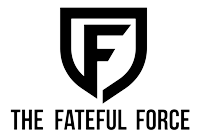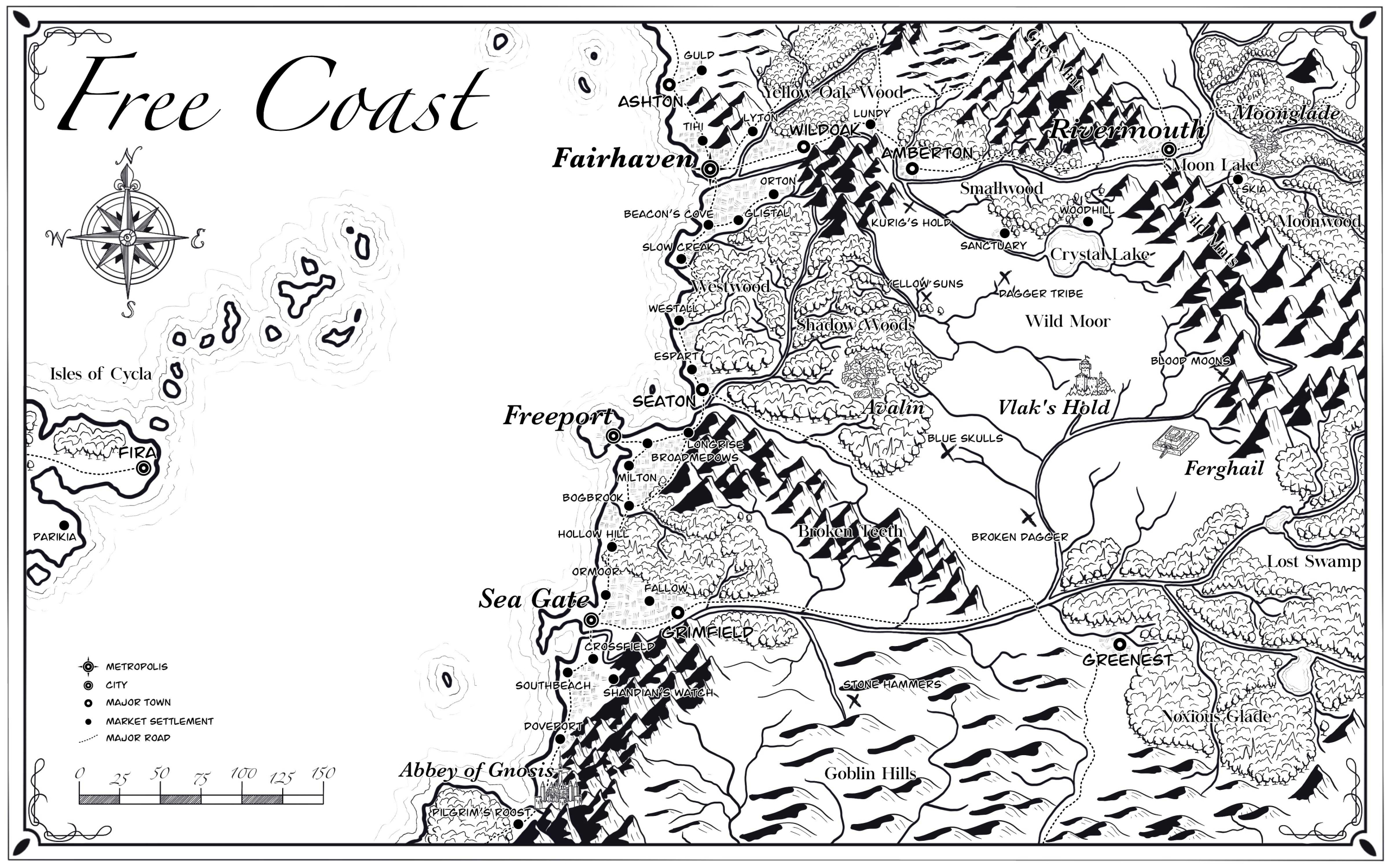The North Quarter
The North quarter houses most of the city’s wealthiest citizens. The Streets are lined with villas, not the typical row houses found throughout the rest of the Fairhaven.
Roads are paved in bluestone, large enough to accommodate two wagons side by side, with elevated sidewalks and gutters that lead to an extensive sewers network below.
The well-maintained roads are flanked by street lamps with eternal light enchantments that wash the district in a beautiful glow at night, highlighting the wealthy nature of the residents.
Boutique stores, fine taverns, restaurants, lawyers’ officers, and other niche services like the magical “post offices” and wizardry service, can be found within its borders. The wealthiest citizens pay handsomely for magical wards and locks on their houses and properties.
The streets are constantly patrolled by the city watch as well as private guards for those wishing to protect their wealth from thieves.
Temples and Arts District, The center of culture and learning
The Temples District houses most of the major temples as well as many smaller shrines dedicated to lesser gods.
The district is also the home of the Academy of Pelia amongst other smaller schools.
The majority of the city’s theatres and halls exist within its boundaries. Attending concerts and dramas is a popular pastime of many citizens. The halls often play host to debates for elections to the ruling council.
Many modest Taverns and small storefronts exist, servicing the district for those that do not wish to travel to The Grand Market and Trade District.
The streets are well paved, and some magically enchanted street lamps line the boulavards, but not as many as in the Northern Quarter.
Trade District
The Trade district is the largest (by area) district in the city. The city’s main market, The Grand Market, can be found here as well as the home of the biggest collection of stores plying various trades.
The stores make up the first floor of row houses where the owners/managers and large workforces that service the district live with their families.
The district houses the second biggest population of citizens (after the docks/Warehouse District).
The Trade District is controlled by powerful trade guilds.
No aspect of life in Fairhaven is untouched by at least one of its many guilds, and the Trade District is the home of most of the guilds.
It has a number of modest taverns and Inns as well as some more wealthy establishments, that cater to residents of means, traveling merchants, and even adventurers.
The trade district is well-patrolled by the city watch at all hours of the day.
Some taverns and inns never close and some businesses serve the needs of the city at all hours, including physicians, and brothels.
All manner of services and goods that service the citizens can be found here. If you want to buy something you can usually find it including;
Shoemakers, Locksmiths, Butchers, Furriers, Fishmongers, Maidservants, Beer-Sellers, Tailors, Buckle Makers, Barbers, Bathers, Plasterers, Jewelers, Spice Merchants, Taverns/Restaurants, Blacksmiths, Old-Clothes ,Painters , Pastrycooks , Doctors, Masons, Roofers Carpenters, Weavers, Chandlers, Ropemakers, Inns, Bakers, Copyists , Watercarriers, Sculptors, Scabbard makers, Rugmakers, Wine-Sellers, Harness-Makers, Hatmakers, Saddlers, Hay Merchants Chicken Butchers,Cutlers, Purse makers, Glovemakers, Wood sellers, Woodcarvers, Magic shop Booksellers, Bookbinders, apothecaries/doctors.
Other shops of similar goods and services found in this district exist in the other quarters but the market and trade district houses the largest concentration.
The main streets and boulevards are lined with street lamps that are kept alight by the Guild of Chandlers and Lamplighters.
Some of the alleys and narrow streets of the residential row houses blocks can be dangerous at night with lurking thieves and thugs but the main streets and boulevards that are illuminated at all hours of the night are generally safe to walk even by strangers and visitors of the city.
Docks and Warehouse District
This is the second-largest (by area) district in Fairhaven, but the most populated, dirtiest, crowded, and roughest as well.
It houses the largest Warehouse, Shipbuilding facilities as well as smiths, carpenters, mills, factories, tanners, bleachers, and generally “smelly”, “dirty” or “noisy” industries.
It has the second-largest collection of guild houses in all the districts.
These businesses and facilities are either guarded by private security, on the payroll of the trade houses or pay protection money to the local thieves guild that controls the dock quarters.
The poorest but busiest taverns and inns can be found in the docks and Warehouse District servicing the locals as well as the steady flow of sailors that come in every day to the busy trade city.
The streets are generally narrow, except for the main boulevards that lead from city gates to the busy docks and Trade district.
The roads are poorly maintained but still connected to the vast sewers network under the city.
Street lamps are broken in most areas. Business owners (that can afford them) maintain the street lamps outside their establishments giving a disjointed pockmark of lights that only partially illuminates the district at night.
The local Thieve’s guild and its factions use underground cellars that are connected to sections of the sewers as their headquarters and hideouts.
While a fair number of actual thieves operate within these guilds (and some master thieves) they engage mostly in smuggling and handling of black-market goods as well as racketeering and “protection”.
The local thieves guild is rumored to be controlled by an elf (called the Immortal) that has been in power for the last century.
The streets are relatively safe to travel during the day if you have your wits about you (Lots of pickpockets) with larger squads of city watch patrolling them. However, at night it can be dangerous with roving bands of thugs and criminals.
Locals that pay “protection money” to the criminal gangs are left alone, but visitors to the city do well to be armed and guarded or avoid the area at night by staying indoors at one of the many taverns and inns (or avoid the area entirely)
The Castle
At the center of the city is the “Castle”. A walled village in its own right, that is the administrative center of the city.
It houses the city guard garrison (over 500 soldiers) and the headquarters for the city watch.
Each district has its own mayor’s office and city watch district house, but The Castle acts as the headquarters for all state affairs.
Officers for various state affairs include the tax office, courthouses, titles office, a public library, a jail, and training yards existing within its walls. It also maintains its own trades to service the garrison (smiths, saddlers etc)
The garrison includes a large rookery where trained griffons are bred and cared for.
Two wings of elite griffon rider cavalry armed with Sabres, lances, and black power bombs (grenades approved by the Wizarding guilds) help keep the city safe.
Outer Town
Across the southern river is what is called the “Outer Town” of the city.
While still part of the city proper it is disconnected from the rest of the city.
It is also sometimes referred to as the “New District” as it is the expanding part of the city as Fairhaven grows.
With row houses, shop fronts, taverns, and inns it is a modest part of town that reflects all the other districts in that it has a bit of everything.
Farms.
Large farmsteads, small villages, hamlets, and lumber camps can be found sprawling to the North, South, and East of the city for many miles. Tens of thousands of country folk make a living in these countless settlements,
working the earth to service much of the city’s food demands. However, Fairhaven’s size requires it to import large amounts of food stock from other cities and nations.
The Necropolis
Beyond the city walls of the northwestern district lies the solitary and immense graveyard of the city, perched atop a hill that gazes upon the urban expanse.
Over recent decades, the phenomena of the deceased occasionally reanimating from their tombs had grown increasingly frequent. In response to these events, potent protective wards had been placed upon the necropolis, to thwart the raising of undead.
Acolytes of Thanatos, the god of the dead, ensure these wards are maintained, ever vigilant of Immortuos’ gradual resurgence to power.



